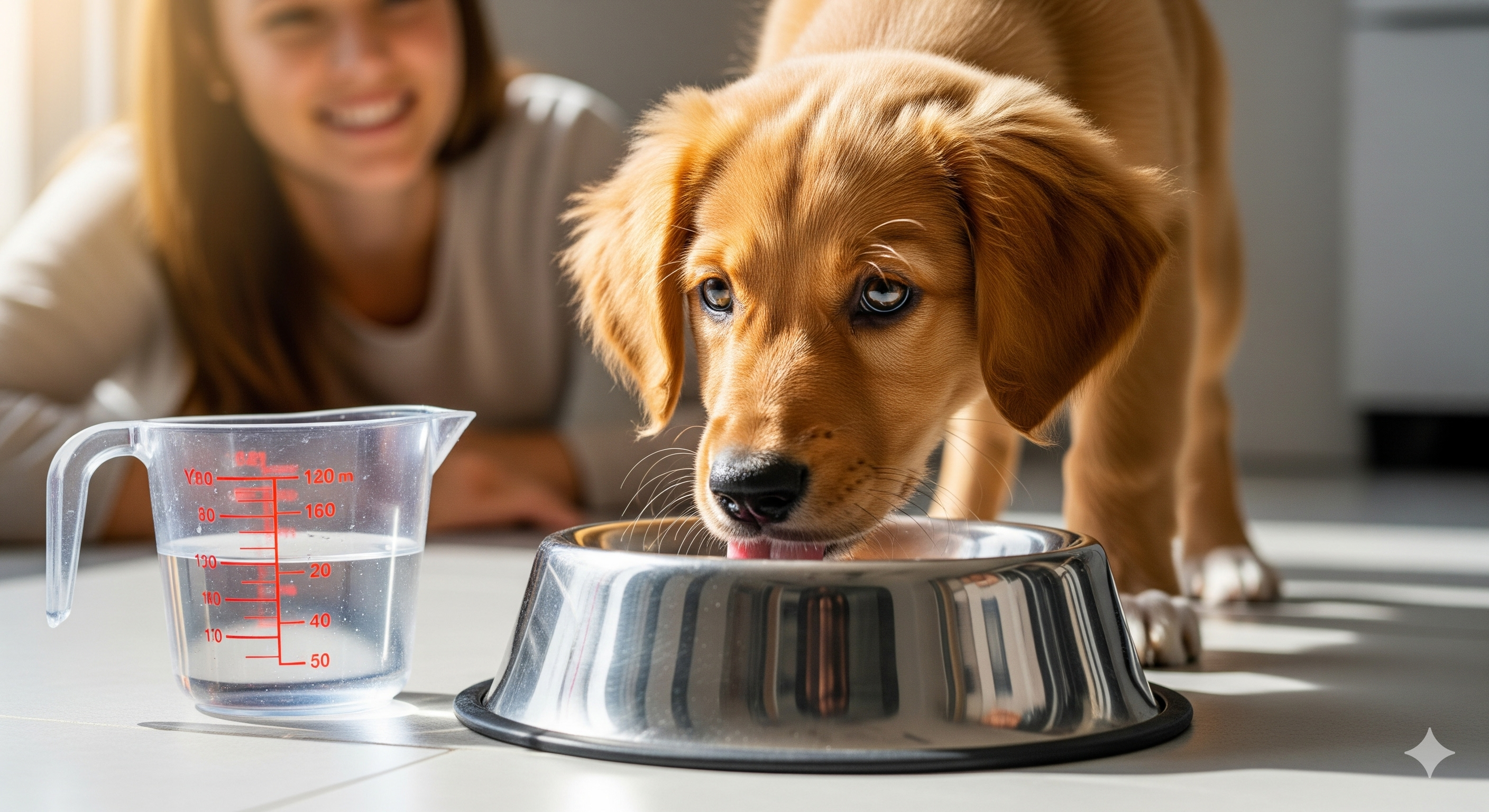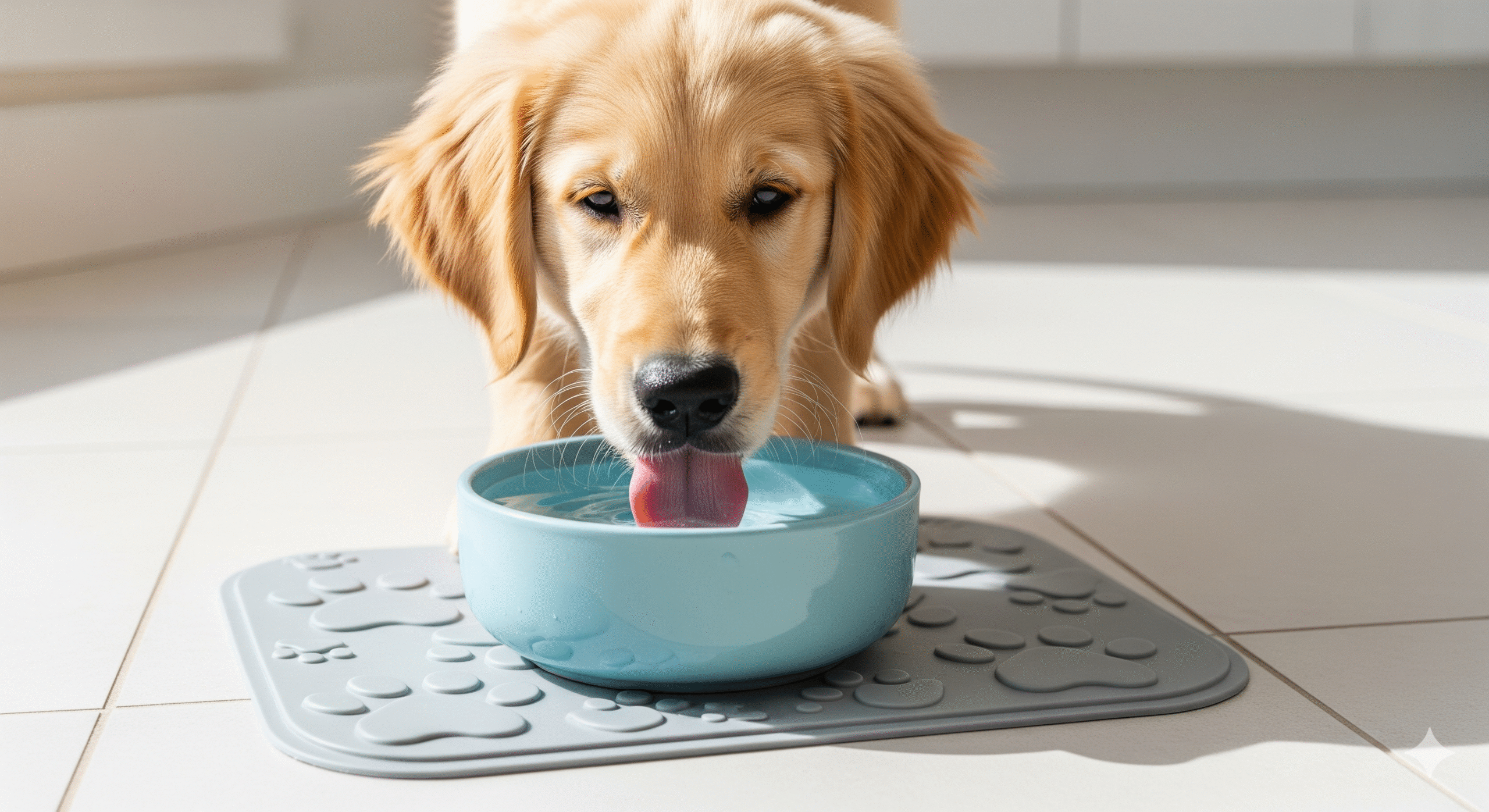Water is the elixir of life, and for a growing puppy, it’s absolutely critical. It regulates body temperature, aids digestion, cushions joints, and flushes out toxins. But as a new puppy owner, you’re faced with a dilemma: you’re told to always provide fresh water, but you’re also dealing with constant potty breaks and maybe even accidents in the house. So, how do you find the balance? Understanding your puppy’s specific water intake needs is the key to navigating this challenge, ensuring they stay perfectly hydrated without turning your house into a water park.
This guide will provide clear, actionable answers. We’ll move beyond the vague advice and give you a practical formula based on your puppy’s weight, along with the knowledge to adjust for their unique circumstances.
Here’s what we’ll cover:
✔️ A simple formula to calculate your puppy’s ideal daily water intake
✔️ The factors that dramatically increase their water needs (exercise, diet, weather)
✔️ How to tell if your puppy is drinking too much or too little—and what each might mean
✔️ Practical tips for managing water schedules to support potty training
✔️ Step-by-step instructions for checking for dehydration at home
✔️ How to encourage a reluctant puppy to drink more water
Let’s ensure your furry friend gets the hydration they need to grow up healthy and strong.
The Golden Rule: How to Calculate Your Puppy’s Water Needs 🧮
A good general guideline is that a puppy needs about ½ to 1 ounce of water per pound of body weight per day.
This means:
- A 5 lb puppy needs between 2.5 oz and 5 oz per day.
- A 10 lb puppy needs between 5 oz and 10 oz (⅝ to 1¼ cups) per day.
- A 20 lb puppy needs between 10 oz and 20 oz (1¼ to 2½ cups) per day.
Important Note: This is total water intake, which includes the moisture they get from their food.
- Kibble-fed puppies: Dry kibble is only about 10% moisture. They will need to drink most of their water requirement from their bowl.
- Wet or Raw-fed puppies: Canned food is about 70-80% moisture, and raw food is about 65-70% moisture. These puppies will naturally drink significantly less water from their bowl.
Factors That Influence Your Puppy’s Water Needs 🔧
Think of the baseline formula as a starting point. You must adjust up or down based on these factors:
1. Activity Level & Exercise 🏃♂️
A puppy that just had a 30-minute play session will need more water than one who has been napping all afternoon. Always offer water after exercise.
2. Weather & Environment 🌞
Hot and humid weather will cause your puppy to pant more and lose fluids, increasing their need for water. Similarly, a home with dry, forced-air heat in the winter can also be dehydrating.
3. Health Status 🤒
- Illness: A puppy with an upset stomach (vomiting or diarrhea) can become dehydrated very quickly and will need extra fluids.
- Medications: Some medications can increase thirst.
- Lactation: A nursing mother will have much higher water demands.
How to Monitor Your Puppy’s Intake: The Bowl Method 🥣
It’s easier than you think to track how much they’re drinking.
- Use a measuring cup to fill their water bowl at the same time each morning.
- Note how much you put in.
- At the end of the day, measure how much is left.
- Subtract to find out how much they drank.
Do this for a few days to get a reliable average. This helps you establish their “normal.”
Is My Puppy Drinking Enough? Signs of Dehydration 🚨
Mild dehydration can be easy to miss. Here’s how to check:
- The Skin Tent Test: Gently pinch the skin between your puppy’s shoulder blades. Pull it up and release. In a well-hydrated puppy, the skin will snap back into place immediately. If it returns slowly or remains tented, this is a sign of dehydration.
- Check Their Gums: Healthy gums are moist and slick. Dry, sticky gums indicate dehydration.
- Capillary Refill Time: Press your finger gently on your puppy’s gum until it turns white. Remove your finger and count how long it takes for the pink color to return. It should take 1-2 seconds. Longer than that can indicate a problem.
- Other Signs: Lethargy, loss of appetite, sunken eyes, and panting excessively.
If you suspect your puppy is dehydrated, contact your veterinarian immediately.
Is My Puppy Drinking Too Much? (Polydipsia) 🤔
While it’s less common, excessive drinking can be a red flag for underlying health issues.
Potential Causes of Excessive Thirst:
- Kidney Disease: The kidneys lose their ability to concentrate urine, leading to increased thirst.
- Diabetes Mellitus: High blood sugar causes the body to try to flush it out through urine, leading to dehydration and increased thirst.
- Uterine Infection (Pyometra): A life-threatening infection in unspayed females that can cause excessive drinking.
- Cushing’s Disease: A hormonal disorder that causes increased thirst and urination.
- Certain Medications: Like steroids.
When to Worry: If your puppy is constantly draining the bowl, seems obsessed with water, and is urinating huge amounts frequently, it’s time for a vet visit.
Managing Water for Potty Training Success 🚽
The goal is to provide adequate hydration while also creating predictable potty breaks.
- Scheduled Access: Offer water frequently throughout the day, especially after play, naps, and meals.
- The Evening Cut-Off: To help with overnight accidents, pick up the water bowl about 2-2.5 hours before bedtime. Ensure they get one last chance to potty right before bed.
- Never restrict water during the day or in hot weather. This is dangerous and can lead to dehydration.
How to Encourage a Puppy to Drink More 🎯
If your puppy is a reluctant drinker:
- Ensure the water is always fresh and clean. Wash the bowl daily to prevent biofilm buildup.
- Try a different bowl. Some puppies prefer stainless steel over ceramic, or a wider, shallow bowl that doesn’t touch their whiskers.
- Add a splash of flavor: Add a small amount of low-sodium chicken broth or the water from a can of tuna (in water, not oil) to their water.
- Invest in a pet water fountain. The moving water often entices puppies to drink more.
Final Checklist for Perfect Puppy Hydration ✅
☑️ I know my puppy’s weight and can calculate their rough water needs.
☑️ I am tracking their intake with the measuring method.
☑️ I know how to perform the skin tent test to check for dehydration.
☑️ I provide fresh water constantly during the day but remove it 2+ hours before bed.
☑️ I have a plan to encourage drinking if my puppy is reluctant.







